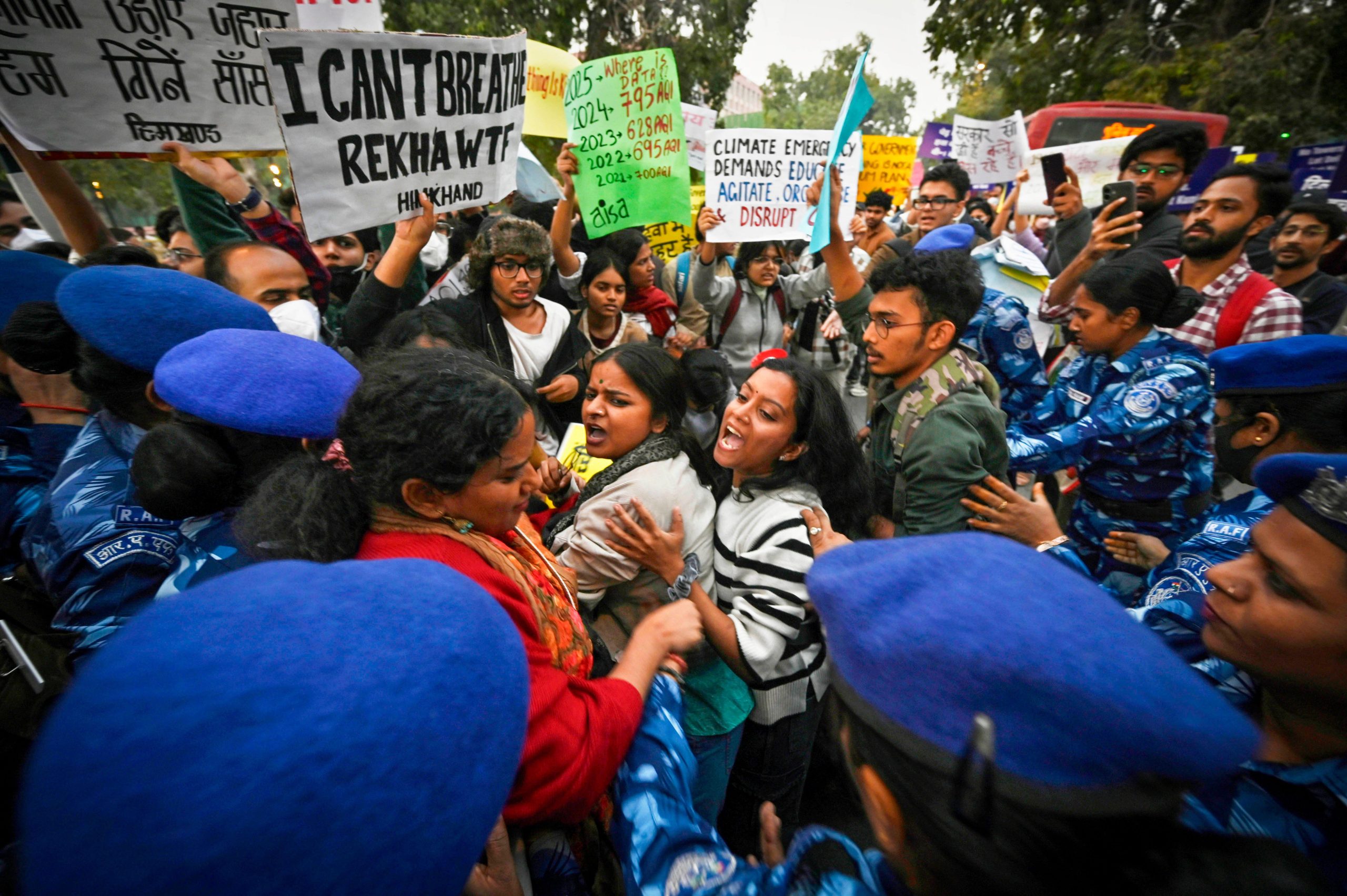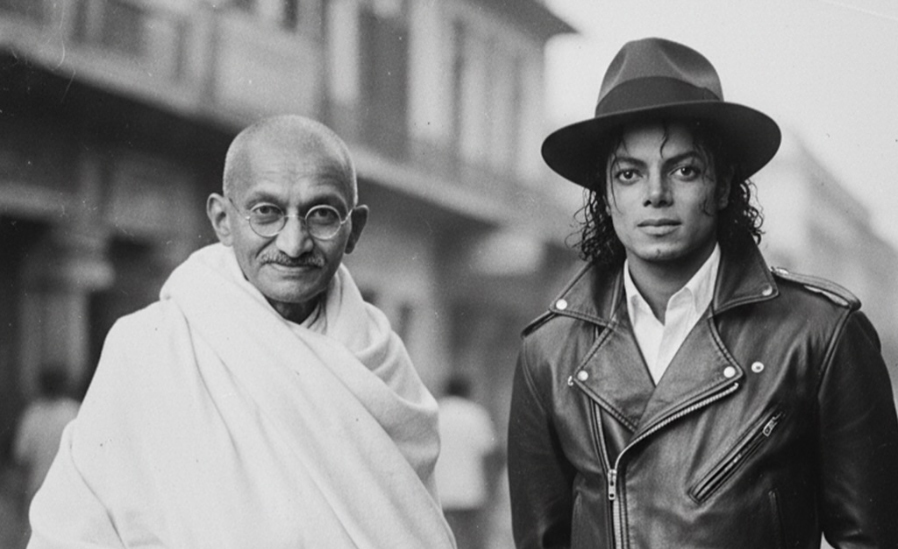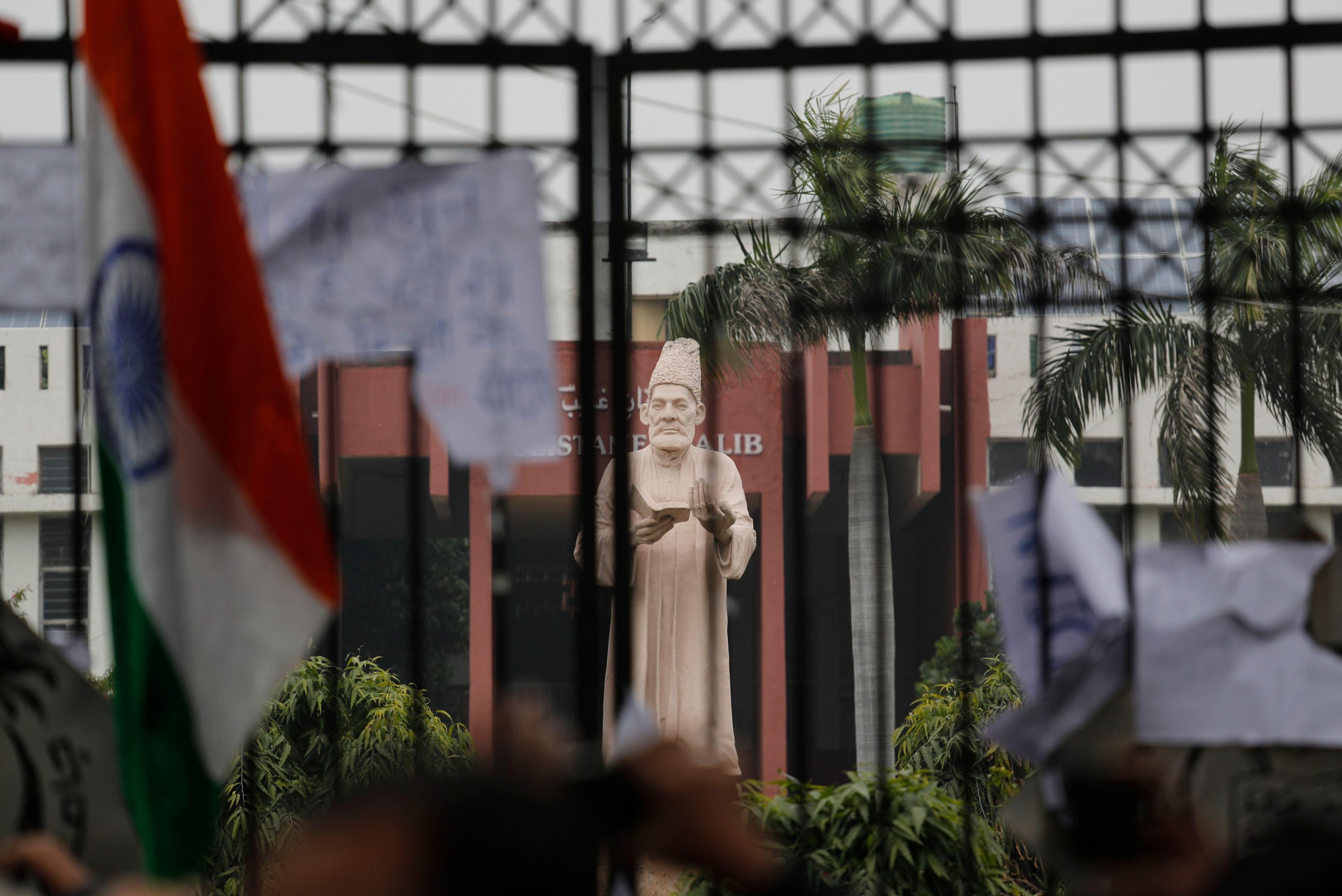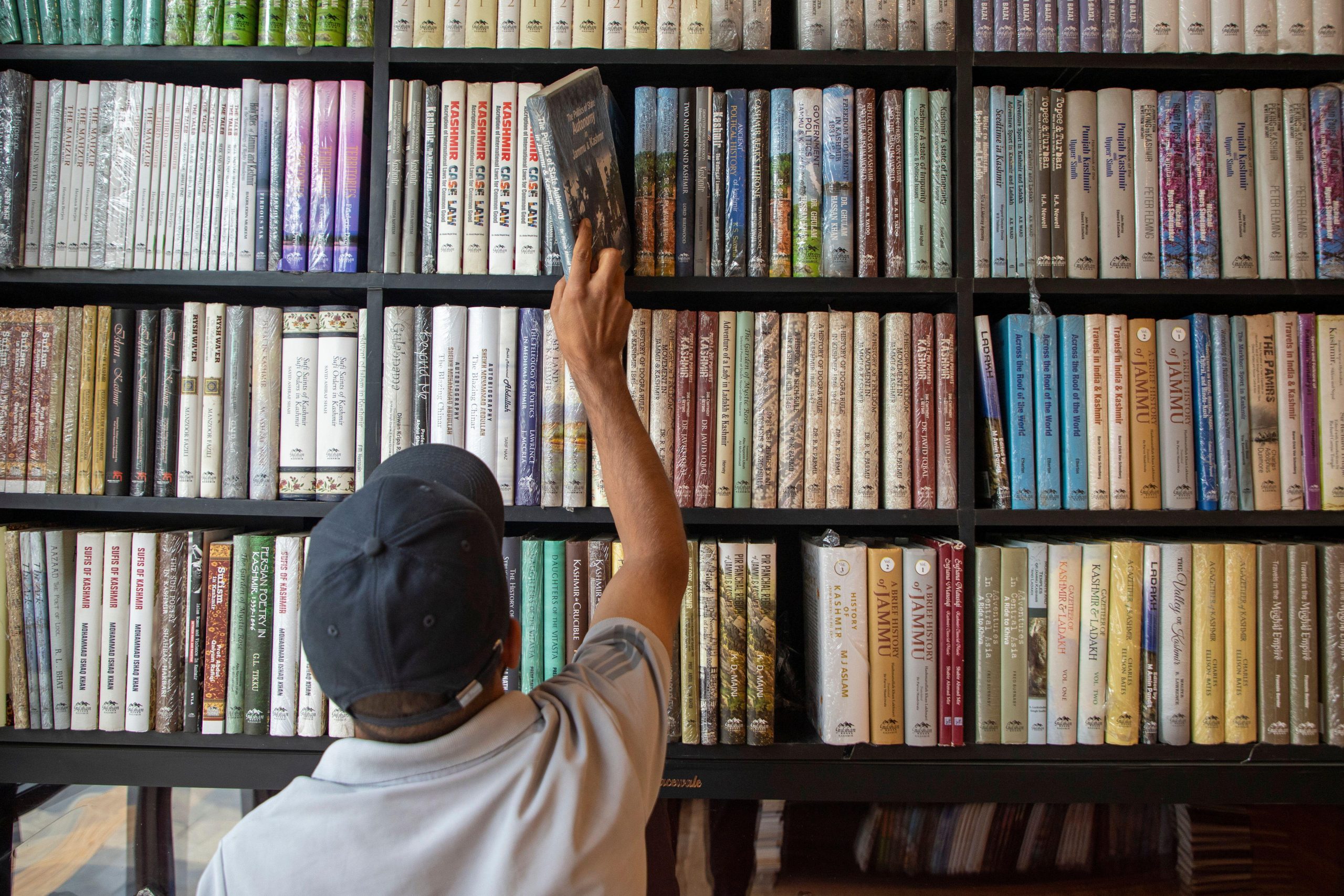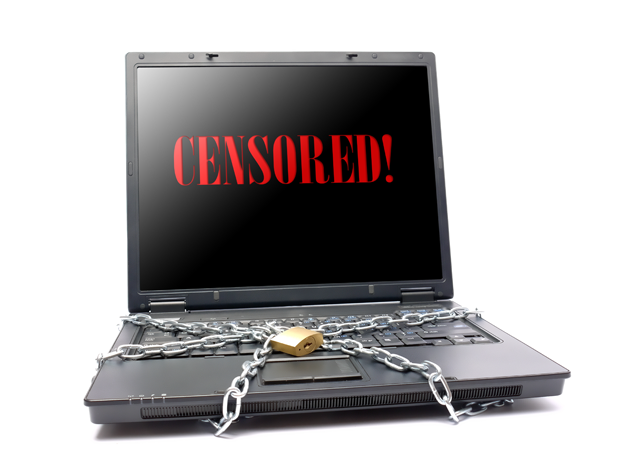
(Photo: Shutterstock)
CONTENTS
Introduction and Recommendations | 1. Online censorship | 2. Criminalisation of online speech | 3. Surveillance, privacy and government’s access to individuals’ online data | 4. Access: obstacles and opportunities | 5. India’s role in global internet debates | Conclusion
1. ONLINE CENSORSHIP
Since 2003, the institutional structure of internet censorship and filtering has centred on the Indian Computer Emergency Response Team (ICERT), a department of the Ministry of Communication and Information Technology that serves as a nodal agency for accepting and reviewing requests from a designated pool of government officials to block access to specific websites.[2] This chapter will outline how takedown requests, both with and without court orders, are commonplace, and demonstrate that corporations sometimes contribute to censorship by over-complying with government requests. Along with filtering and blocking policies, these procedures are inconsistent and often threaten freedom of expression in India. With so many methods being used to restrict online speech, there is lively debate in India around how censorship affects fundamental freedoms and society.
“There is no definition of what ‘obscenity’ and ‘incitement’ constitutes. Because of the vagueness of the law on the one hand, and the obligations of the law on the other hand [taking down offensive content], the door is opened to interpretation and subjectiveness,” says Rajeev Chandrasekhar, a member of the upper house of the Indian Parliament.[3] The vagueness of the law has led to people being arrested and charged for innocuous posts and tweets. The Information Technology Act (IT Act) and its 2008 amendments do not provide a clear legal definition of what is offensive and there is no common view in society of what can or cannot be said online and offline, leading to uncertainty. This has resulted in a growing tendency to report content deemed “offensive” and demand its removal.
Intermediaries – web companies that host content but do not produce it – tend to over-comply with takedown notices out of fear of being liable for offensive content and then prosecuted. The over-compliance of internet intermediaries with takedown notices is concerning as it removes from the internet content which is entirely legitimate.
Compounding this problem is the lack of an appeal process. Intermediaries in India are neither required to notify people when their posts or photos are censored nor give them an opportunity to appeal the decision. In practice, this situation creates an indirect form of censorship when not the government but intermediaries become censors.
(A) TAKEDOWN REQUESTS
Takedown requests, when properly regulated, implemented and subjected to judicial oversight, can be an effective way for copyright owners and aggrieved individuals to remove illegal content from the web. When takedown procedures are inconsistent or inadequately defined, as is the case in India, such requests can, and often do, chill freedom of expression.
In the 2008 amendments to the IT Act, the government acted to limit intermediary liability and standardise notice and takedown procedures under Section 79 of the IT Act. This marked a positive move to curtail the worst abuses of the law and protect intermediaries. The question of intermediary liability is particularly complex in India due to vague laws around defamation and public order. The Indian authorities have tended to prioritise control or regulation of free speech to “protect communal harmony”. The protection of communal harmony was cited as a major factor behind the move in 2011 by the Indian Central Government to issue the Information Technology [Intermediaries Guidelines] Rules – also called the 2011 IT Rules – requiring intermediaries to remove infringing content within 36 hours if someone reports it as offensive.
Many medium and small internet businesses have been vocal in criticising the impact of these rules, a piece of secondary legislation linked to the IT Act.[4] They denounce the onerous conditions they face as intermediaries in the event of prosecution. The confusion around intermediary liability laws encourages privatisation of censorship and causes a great deal of uncertainty for businesses which they argue hinders innovation.[5]
In 2011, the Bangalore-based Centre for Internet and Society (CIS) ran a series of tests to see how intermediaries responded to bogus takedown request within the 36-hour timeframe. Six of seven intermediaries over-complied with requests, meaning they restricted more content than legally required. Hundreds of pages were taken down at the expense of legitimate expressions.[6] This over-compliance demonstrates a real chilling effect on freedom of expression, as many intermediaries are overwhelmed with requests or do not have the legal expertise to properly handle them in a manner that protects freedom of expression.
In April 2013, the Government issued a Clarification on the Information Technology [Intermediaries Guidelines] Rules, under Section 79 of the IT Act. The clarification addresses the controversial 36-hour period and says that the intermediaries shall respond or acknowledge to the complainant within 36 hours of receiving the complaint/grievances, and then initiate appropriate action in line with the law rather than actually take down the content. While this clarification is helpful, the law remains flawed and still subjects intermediaries to criminal prosecution for failure to comply in a short period of time. This narrow timeframe, which does not specifically take into account public holidays or weekends, puts intermediaries in a difficult position where they are required to be overly zealous in taking down content that may be entirely legitimate.
Government requests for the removal of illegal or offensive content is steadily on the rise around the world, but this is especially the case in India. A benchmark to track this trend is the Google Transparency Report, where India leads in the number of takedown requests issued without court orders. Indian authorities cite national security concerns to justify many of their takedown requests without court orders.[7] For example, in the second half of 2012 the Indian Computer Emergency Response Team cited public order and ethnic offence laws to issue a request for “The Innocence of Muslims” video clips to be taken down. The video clips had sparked disturbances in India’s north-east regions and Google locally restricted the “Innocence of Muslims” video clips from YouTube and several other YouTube videos and comments.
While “The Innocence of Muslims” case launched a debate over how religious or cultural sensibilities balance with free expression, the lack of judicial oversight in content takedown and political interference are common practice in India.[8] The removal of “The Innocence of Muslims” demonstrated how the politics of fear is intruding into the online environment.[9]
Google is not the only company dealing with a significant number of takedown requests. For small start-ups and internet service providers, a large number of takedown requests can encourage those afraid of penalties to over-comply, removing URLs that do not link to illegal content. A consequence of the IT Act and of the over-compliance would be the delegation of essential executive function to private parties like Google, Facebook or MouthShut.com to censor and restrict free speech of citizens or else face legal challenges over user content.
Case study: MouthShut.com
On 29 April 2013, MouthShut.com, India’s leading online consumer review website, filed a petition in the Supreme Court of India to nullify the 2011 IT Rules. The petition pleads that the 2011 IT Rules be declared illegal, null and void as they are ultra vires of the Constitution.[10]
Faisal Farooqui, founder of MouthShut.com, has said that the company has “been threatened with hundreds of legal notices, cybercrime complaints and defamation cases. At other times, officers from various police stations call our office, demanding deletion of various reviews or face dire consequences under the IT rules”.[11]
Under the IT rules, MouthShut is required to remove content within 36 hours of receiving a request (a request does not necessary need to be issued by a court order but can be filed by any individual). The problem is that MouthShut.com receive requests under IT Rules “to remove any negative review about a company or brand simply because they don’t like it, irrespective of the facts stated in the review.”
“It is submitted that the impugned Rules impose significant burden on it forcing it to screen content and exercise online censorship, which in turn impacts the freedom of speech and expression of its customers, thereby risking a loss of its large consumer base or incurring legal costs and facing criminal action for third party user-generated content,” Farooqui said.
(B) FILTERING AND BLOCKING
India engages in the widespread blocking and filtering of websites. The Indian Computer and Emergency Response Team is able to make executive orders to internet service providers to block websites. The range of sites that are censored is quite broad and ranges from human rights and freedom of expression content to extremism and porn.[12] This section addresses the problematic role that a government authority, the Indian Computer and Emergency Response Team (ICERT), has in being able to order internet service providers to selectively filter content, including without court instruction.
Despite an announcement to install filtering mechanisms at India’s international gateways, government attempts at filtering have not been entirely effective because blocked content has quickly migrated to other websites and users have found ways to circumvent filtering.[13] However, India’s filtering and blocking policies remain problematic both because of the scale of the compliance with ICERT but also the scope of its powers. Many have argued that giving ICERT filtering power through executive order violates constitutional jurisprudence, especially since the blocking mechanism created under the IT Act provides for no direct review or appeal procedures and is a permanent block.[14]
Beyond excessive powers to filter, India’s government also holds significant and disproportionate powers to block content. Merely in order to gain a government licence to operate, internet service providers (ISPs) in India must agree to block sites and individual users when national security needs arise and to prevent the transmission of “obscene” or “objectionable” material. Since 2008, these powers have been extended to block more than just content that is “obscene”. The newly added Section 69A of the IT Act also grants power to the central government, “in the interest of sovereignty and integrity of India, defense of India, security of the State, friendly relations with foreign states or public order,” to issue directions to block public access to any information from any “computer resource.” This executive power is significant and should be subjected to justice oversight to avoid misuse of the law by the executive.
Only a limited number of specified individuals or institutions can make official complaints and recommendations for investigation to ICERT. These include high-ranking government officials, the police, government agencies and “any others as may be specified by the Government”. In return, ISPs have to comply with blocking orders from ICERT. Since 2006, blocking requests can also come from individuals reporting content they personally consider to be offensive or obscene. Individuals can do this by filling a Public Interest Litigation petition in order to put pressure on the government or justice authorities to issue a filtering notice.
This is having a significant impact on freedom of expression. Tests undertaken of the blocking practices of ISPs revealed variations, suggesting that ISPs go beyond direct blocking orders to pro-actively block content. This practice results from licensing agreement that require ISPs to bock internet sites as identified by the Telecom Authority but also to prevent the transmission of obscene or objectionable material. Civic society in India is concerned that the culture of blocking at ISPs is curtailing online access to content that is perfectly legal and should be protected by the Indian constitution.
(C) NETWORK DISRUPTIONS
Network disruptions are also a major concern in India. In January 2012, during a period of political unrest, telecommunication networks were pre-emptively shut down in Jammu and Kashmir amidst fears that mobile phones could be used to detonate bombs.[15] Beyond the direct disruption of networks, the government engaged in the direct censorship of the media and of expression with local television stations suspended, several Facebook pages taken down, text messages blocked and local newspapers stopped from printing in the city of Srinagar based on their political slant or content.
In August of that year, during riots in the north-eastern states, India banned the sending of bulk SMS messages across the entire country for 15 days and blocked hundreds of websites that allegedly contained inflammatory content to prevent violence.[16] This decision was undertaken without judicial oversight, as national telecom operators had to comply with an executive order from the Home Ministry.[17]
The communal riots in Jammy and Kashmir provoked one of the biggest internal migrations of recent times and fears of escalation led to heavy-handed network disruptions. The disputed territory of Kashmir is frequently the target of such disruptions and encapsulates the complexity of the use of pre-emptive censorship to prevent the very real threat of violence.[18] On the one hand, the traditional media landscape is expanding and the internet has brought new reporting opportunities for citizen journalism. Many Kashmiris now have mobile devices that allow them to capture images and videos and share information. Hundreds of videos have been uploaded and shared on the internet by people in the state. However, during times of political tension, Kashmiris are denied their right to freedom of expression when the government cuts off access to the internet. In February 2013, the Indian government suppressed all news and communications channels – including television stations, newspapers and mobile Internet service – in the Kashmir Valley when Kashmiri militant Mohammad Afzal Guru’s execution in New Delhi revived political unrest in the troubled region.[19]
There is evidence to suggest the blocking of cable TV is not just a problem in Kashmir. According to the Asian Media Barometer for India, authorities in a number of states occasionally block certain cable news channels or instruct cable operators not to carry channels based on their political views or content.
The restrictions on digital free speech in India are of great concern. The main issues are takedown and blocking policies, along with the network shutdowns and criminalisation of online speech. Amending notice and takedown procedures are key reforms necessary to provide greater clarity and certainty to intermediaries. Intermediaries should be required to alert authors and provide them a means of appeal when their content is flagged for takedown, a process that can often take longer than 36 hours. The time frame for intermediaries to respond should be extended. Codifying these reforms into law and implementing them swiftly and effectively would reduce the associated threat to freedom of expression.
CONTENTS
Introduction and Recommendations | 1. Online censorship | 2. Criminalisation of online speech | 3. Surveillance, privacy and government’s access to individuals’ online data | 4. Access: obstacles and opportunities | 5. India’s role in global internet debates | Conclusion
This report was originally posted on 21 Nov 2013 at indexoncensorship.org
[2] Freedom House, ‘Freedom on the Net 2012: India’, http://www.freedomhouse.org/report/freedom-net/2012/india accessed on 9 September 2013.
[3] Index on Censorship interview, 30 August 2013.
[4] Government of India, Ministry of Communications and Information Technology, “The Information Technology (Electronic Service Delivery) Rules, 2011”, http://deity.gov.in/sites/upload_files/dit/files/RNUS_CyberLaw_15411.pdf accessed on 19 November 2013.
[5] The Economist Intelligence Unit, ‘Good to grow? The environment for Asia’s Internet business’ (9 July 2013), http://asiainternetcoalition.org/advdoc/2c083eb6cd1ae38cee3826e1ad6a2a6e.pdf accessed on 10 September 2013.
[6] Centre for Internet and Society, ‘Intermediary Liability in India: Chilling Effects on Free Expression on the Internet 2011’, http://cis-india.org/internet-governance/intermediary-liability-in-india.pdf accessed on 4 September 2013.
[7] Indian authorities requested, without court orders, that 2,529 items be removed between July and December 2012 – a 90 percent increase over the first half of the year 2012. Google, ‘Google Transparency Report’, http://www.google.com/transparencyreport/removals/government/IN/ accessed on 5 September 2013.
[8] Kenan Malik and Nada Shalout, Index on Censorship, ‘Should religious or cultural sensibilities ever limit free expression?,’ http://www.indexoncensorship.org/2013/08/should-religious-or-cultural-sensibilities-ever-limit-free-expression/ accessed on 25 September 2013.
[9] Rebecca MacKinnon and Ethan Zuckerman, Index on Censorship, ‘Don’t feed the troll,’ http://www.indexoncensorship.org/2012/12/dont-feed-the-trolls-muslims/ accessed on 25 September 2013.
[10] Times of India, ‘Supreme Court to Examine validity of Information Technology rules’ (30 April 2013), http://articles.timesofindia.indiatimes.com/2013-04-30/internet/38929437_1_intermediaries-guidelines-accuracy-censorship accessed on 30 August 2013.
[11] Medianama, News and Analysis of Digital Media in India, ‘MouthShut Challenges the IT Rules In The Supreme Court Of India’, (29 April 2013), http://www.medianama.com/2013/04/223-mouthshut-it-rules-supreme-court-of-india/ accessed on 25 September 2013.
[12] Ronald Deibert, John Palfrey, Rafal Rohozinski and Jonathan Zittrain, OpenNet Initiative, ‘Access Contested. Security, Identity, and Resistance in Asian Cyberspace’ (September 2011), http://access.opennet.net/wp-content/uploads/2011/12/accesscontested-india.pdf accessed on 10 September 2013.
[13] In January 2007, the Department of Telecommunications announced that it would install filtering mechanism at India’s international gateways. OpenNet Initiative, ‘Country Profile: India’ (9 August 2012) https://opennet.net/research/profiles/india accessed on 10 September 2013.
[15] Freedom House, ‘Freedom on the Net 2012: India’, http://www.freedomhouse.org/report/freedom-net/2012/india accessed on 9 September 2013.
[16] Times of India, ‘5 SMS per day limit comes into effect’ (18 August 2012), http://articles.timesofindia.indiatimes.com/2012-08-18/telecom/33260957_1_smses-and-mmses-bulk-messages-ban-period accessed on 9 September 2013.
[18] Sumit Galhotra, Committee to Protect Journalists, ‘In Indian Kashmir, concerns over Internet censorship’ (4 October 2012), http://www.cpj.org/blog/2012/10/in-indian-kashmir-concerns-raised-over-internet-ce.php accessed on 10 September 2013.
[19] Reporters Without Borders, ‘News media and internet totally censored in Kashmir’ (13 February 2013), http://en.rsf.org/india-news-media-and-internet-totally-13-02-2013,44066.html accessed on 10 September 2013.


